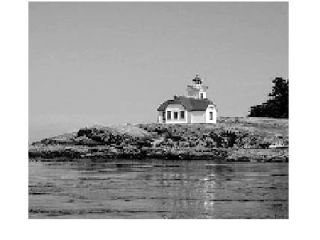Did you know that the Bureau of Land Management (BLM) owns and manages over 1,000 acres in San Juan County? BLM properties include historic lighthouses, small islands, forests and coastal prairies. They are among the most scenic and special places in the Islands.
Though the BLM has been an excellent steward of these properties, managing them for conservation and preservation, over 600 of these acres do not have official conservation designation and could be used far more intensively. With increased use and pressure on these public lands, their future is in question and we could lose important pieces of island history and some of the places that make our community so unique.
For example, Patos Island and lighthouse, the northernmost of the San Juans, is steeped in history, home to rare species, and has some of the most spectacular sunsets you’ve ever seen. Early Native Americans used the island as a shellfish harvesting and a gardening site. Spanish explorers gave the island its present name in the late 1700’s. After becoming part of the U.S., a fog signal building with a post light was constructed in 1893. A 38 foot tower, housing a fourth order Fresnel lens, was added in 1908.
BLM undertook a total renovation of the structure in 2008. The light is still in operation today, aiding ships traveling through Boundary Pass.
Spring time visitors to Patos are treated to a glorious display of wildflowers, including abundant fawn lilies and orange Columbia lilies.
Beyond the meadows, fern-filled wooded wetlands are only a few steps from dry forests and rocky outcrops. All throughout, the island abounds with songbirds, hummingbirds and nesting eagles.
In 2007, Keepers of the Patos Light was formed with the goals of protecting and preserving the island and the lighthouse. In partnership with the BLM, Washington State Parks and Orcas Island Fire Department do beach cleanup, brush back the trails, maintain campsites and help host special events and lighthouse tours.
Turn Point lies on the northwest tip of Stuart Island, the northern most corner of the contiguous U.S. Established in 1893, Turn Point was the navigational turn marker for vessels transiting Haro and Boundary straights.
In 1974, the U. S. Coast Guard automated the station, and the BLM took over managing the lighthouse and 60-acre property in 1991. Turn Point Lighthouse Preservation Society (TPLPS) was formed in 2005 to work with the BLM to restore this historical site for public use.
To date, the main house has been stabilized and a museum has been established in the mule barn (the only mule barn in the state) A docent is on site July 1 through Labor Day each year to assist visitors. The lighthouse is a one mile hike from Prevost or Reid Harbor.
As one can see, there has been a lot of local involvement in preserving these lighthouses. This local activity is welcomed by the BLM, but is only a small part of the picture. Currently the BLM deals with over 60 entities in managing its various properties in the San Juans. To better coordinate its efforts, the BLM will be preparing a Resource Management Plan and looking at how to incorporate these lighthouses as well as all of its 1,000 acres into a cohesive management system.
This process will begin in May, with public scoping meetings on several islands. The goal of these meetings is to familiarize islanders with these special places and ask for local perspective on appropriate management activities.
If islanders want these properties to remain as they are and to be managed for their natural and historical values, one option is to ask Congress to designate them as a National Conservation Area (NCA). NCA designation would protect these areas in perpetuity, and help direct more funds toward restoring and maintaining them.
This begins a series of articles that will give a background of significant BLM land and the process and possibilities of NCA designation.





